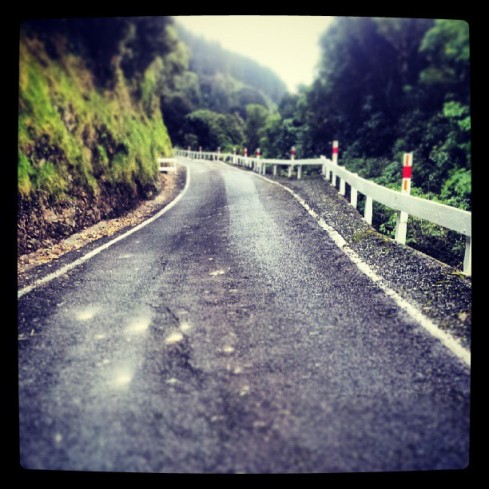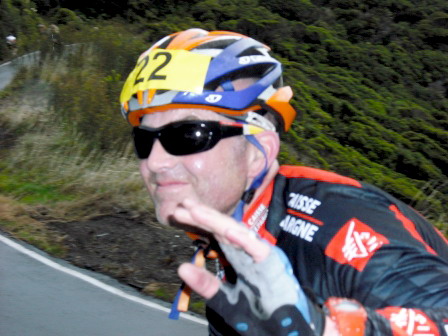I started riding at the beginning of 2008. Using a commute (with a decent hill, for a beginner, unavoidably placed in the middle of the ride) as the backbone of a 3-4 ride week. In the weekend, a long slow ride with a recreational group introduced ‘peleton skills’. This was really very valuable. 11,000 riders do Taupo, riding in a group is an essential skill.
By June 2008 I had 4 -5 months training under my belt, commuting with climbs, weekend longer rides with a group, I felt like a cyclist… though a little rough around the edges: riding in mtb pedals (SPDs), mtb helmet with a peak, wearing underpants under cycling shorts (no, not a good idea,) with an average pedalling cadence on the flat around 80rpm (slow.)
I hoped my belly was getting smaller (3 kg off, now around 89kg). Getting stronger on hills, I didn’t mind being called ‘The Whale’ by a friend. The Taupo event in November every year motivates a number of cycling groups around the country. This is the raison d’etre for the Tarbabies, a recreational (and free) cycle group in Wellington, which prepares allcomers for the Taupo classic ride in November.
8am in the morning, at my desk, the morning is clear and cold early winter weather and I am on the Taupo website, pausing over the ‘pay now’ key. I have never done a formal cycling event of any kind. It has 1500m elevation and 160kms… its a complete unknown. I push the button with excitement, trepidation. I’m in. Hang on, I can’t complete this ride on current fitness!!
My first training read was a Chris Carmichael / Lance Armstrong book which outlined several 8 week plans to improve fitness. It introduced the idea that you need different kinds of fitness, in short, to introduce variety into my riding week. I tried to do this, but looking back, I was still only doing 3 types of ride. Firstly, commuting fast enough to not get caught. Secondly the commute, extended by 15 kms with an extra super hard 15 minute climb in the middle (grinding at 50rpm cadence). And finally, the long rides with the group on Sunday, which became longer and hillier as the year progressed. In the last month, everyone was fired up and the group rides gained some very useful intensity.
In the meantime, Wellington progressed into a freezing, wet winter. Wet / cold riding gear comprised long cycle tights, water proof overshoes (they never are,) heavy gloves, long sleeved thermal base layer, long sleeved cycle jersey, rain jacket. I froze.
I could have done with skull cap / ear flap cover thingys, thermal socks, quality gloves (worth the money). Busted zips on nearly every sleeveless jacket (gillet)….shell jacket!
Two maxims 1.you are only ever as warm as your fingers and toes – never a truer word said, might add ears to the list. And 2. in cycling, to improve, as Eddy Merkx said, ride more! It improves the efficiency of your muscles on the bike and builds the endurance needed to get to the end.





You must be logged in to post a comment.